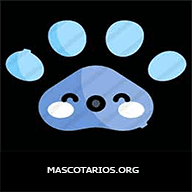Content |
|---|
History
The Norfolk Terrier he is a very small terrier, low rise. Until 1964 formed a dog breed along with the Norwich Terrier. Both differ only in the shape of their ears. While the Norfolk Terrier has slanted ears, the Norwich Terrier has standing ears. In the past these dogs were raised together and it was always a surprise that puppies had ears. Because the judges at the shows at least felt they preferred lop-eared dogs, wanted to have floppy or tilted ears in a class of their own. But, either standing or with ears hanging, they are wonderful terriers, vivacious little ones you can enjoy. They come from the Middle East of England. There these little terriers served the town for many years as watchdogs and hunters at home and at court..
Keeping rats and mice, driving away a marten or fox that wanted to feed on chickens or pigeons at night, they proved to be useful helpers at home and in court. But, the small Norfolk Terrier was not, like many other somewhat larger terriers, used for active fox hunting, the marten and the otter. Didn't have to go in pursuit of these predators. He would not have lacked courage and determination. The Terriers de Norwich and Norfolk they were useful as a cat, but much more defensive and effective, especially when it came to fighting rats. They also had the added value of being watchdogs and danger alarms and were better able to deal with harsh, wet and cold weather conditions of central England.
So these little terriers were already widespread in cities centuries ago.. Consequently, they were bred solely for their suitability for their tasks. Either with upturned or drooping ears, it did not matter. As their tasks drifted away from rats to accompany the human psyche, the subtleties of his outward appearance also came into play. One separated the terrier into two breeds. In 1954, both were officially recognized by the FCI under the name of Norwich Terrier. The tipped-ear variant was recognized as a separate breed in 1962.
Physical characteristics
It is a small dog, clever, short limb, compact and vigorous; It has short back and its structure and strong bones.
Norfolk Terrier has a hair double layer: a hard top layer, ribbed and a warm and soft layer.
Ideally, is due comb the hair once a week to remove the loose hairs, dead and prevent mat.
It´s one of the smaller Terrier dogs, a “Demon” for its size. Affectionate but not quarrelsome, robust Constitution.
The tail amputation is optional. Medium amputation, set level with the dorsal line and carried erect. Tail of moderate size to give the dog an overall balance, thick at the base and is tuned toward the tip, as straight as possible, happily held, but not in an excessive manner.
Its movement is natural, low and high thrust. Previous members directed straight forward from the shoulders. A good angulation of the hindlimbs provides you with a great driving force.
The Member posterior move in line with the anterior, with free movements from the hips, and they must bend well at the knees and hocks. level top line.
The hair It hard, rough texture (wire), straight and well attached to the body. Long and rough in the neck and shoulders.
The hair is short and smooth on the head and ears, with the exception of a few light eyebrows and mustache.
With regard to the color, We find all the shades of reddish, wheat, black and Tan or grey. Stains or white markings are undesirable, but allowed.
The height ideal to the cross is between 25 and 26 cm..
Character and skills
Norfolk Terrier should not be aggressive despite being able to defend itself if necessary. Them, along with Norwich Terrier and the Border Terrier, has the softer temperament of the Terrier group.
Videos of the Norfolk Terrier
Lightbox for Video by VideoLightBox.com v1.11
Like fellow, they love people and children and they are good pets. His level of activity is generally a reflection that the pace of its environment.
This breed should not stay or live outside, that thrive with human contact. In general, Norfolk Terrier does not generally dig, but, like any dog, will dig out of boredom when left alone for too long a period.
Usually, living well with other pets when introduced as a dog. In the open air, they are natural hunters and have a strong instinct for prey to small bugs.
The Norfolk Terrier is a dog self-confident, they are elegant, they are erect tail and head. A Norfolk Terrier that is shy or tucks its tail between its legs is unusual..
The typical Norfolk Terrier temperament is happy, cheerful and self-confident. His greatest punishment would be to be ignored by the family..
Norfolk Terrier were bred as barn dogs to rid the stables of animal pests. Today, they are household companions and must have a pleasant willingness to live with the people.
The life expectancy of a Norfolk Terrier is of 12 to 15 years.
Observations
Today, the demand for Norfolk Terrier is much more to offer…
They are dogs that tend to have small litters and responsible breeders developed the breed, they only breed healthy dogs that are of good temperament, lineage, good pedigree and those that best reflect the breed standard.
Norfolk Terrier Education
The education of this breed is an often underestimated chapter. Although the already little dog looks so cute, especially in his first months of life, he is a true terrier very sure of himself. And such a terrier wants to be educated and guided. So, the Norfolk Terrier requires consequences in education from puppy age. Although small, dreams like most terriers in some corner of his brain of assuming leadership of the pack. Deep down he feels loose like a mastiff or a great dane. So you just have to take your education seriously.. Otherwise, there is no problem. He wants and needs the guidance of his master or mistress and is a docile companion., friendly and sociable, that always brings a smile to our faces.
Norfolk Terrier Health and Care
The coat should be regularly groomed. The Norfolk does not know a change of coat. Two or three times a year dead hair should be trimmed, that is to say, ripped – but with moderation.
The small Norfolk Terrier it is a fairly robust breed of dog.
Nutrition / Food
Norfolk Terrier nutrition has no problems.
Norfolk Terrier life expectancy
The Norfolk Terrier they tend to have robust health and an average life expectancy of 15 years and more.
Buy a Norfolk Terrier
The best way to buy your puppy Norfolk is to buy it locally from an FCI member breeder or take a look at the shelter. A dog of this breed costs around 1.000 EUR.
Characteristics "Norfolk Terrier"
Coexistence is important that you have with your new friend. Before considering the acquisition of a dog of the breed "Norfolk Terrier" you know certain factors. Not all breeds of dogs are apt to live in an apartment, you must take into account his character, their need for exercise, their interaction with other pets, their care and if you have small children, their level of tolerance towards them.
Adaptation ⓘ5.0 out of 5 stars (based on 1 review)
|
friendly dog ⓘ4.0 out of 5 stars (based on 1 review)
|
hair loss ⓘ4.0 out of 5 stars (based on 1 review)
|
|---|---|---|
Affection level ⓘ4.0 out of 5 stars (based on 1 review)
|
Need for exercise ⓘ4.0 out of 5 stars (based on 1 review)
|
Social need ⓘ3.0 out of 5 stars (based on 1 review)
|
Home ⓘ4.0 out of 5 stars (based on 1 review)
|
Toilet ⓘ1.0 out of 5 stars (based on 1 review)
|
Friendly with strangers ⓘ4.0 out of 5 stars (based on 1 review)
|
barking ⓘ4.0 out of 5 stars (based on 1 review)
|
Health ⓘ4.0 out of 5 stars (based on 1 review)
|
Territorial ⓘ3.0 out of 5 stars (based on 1 review)
|
Cat friendly ⓘ4.0 out of 5 stars (based on 1 review)
|
Intelligence ⓘ4.0 out of 5 stars (based on 1 review)
|
Versatility ⓘ5.0 out of 5 stars (based on 1 review)
|
Child friendly ⓘ4.0 out of 5 stars (based on 1 review)
|
Surveillance ⓘ4.0 out of 5 stars (based on 1 review)
|
joy ⓘ5.0 out of 5 stars (based on 1 review)
|
Norfolk Terrier pictures
Norfolk Terrier Videos
Type and recognitions:
- FCI CLASSIFICATION: 272
- Group 3: Terriers
- Section 2: Small sized Terriers. Without working trial..
Federations:
- – FCI – Terriers 2 Small sized Terriers. ⓘ
- – AKC – Terriers ⓘ
- – ANKC – Terriers ⓘ
- – CKC – Terriers ⓘ
- – KC – Terriers ⓘ
- – NZKC – Terriers ⓘ
- – UKC – Terriers ⓘ
FCI breed standard "Norfolk Terrier"
Alternative names:
1. Norfolk (English).
2. Norfolk (French).
3. Norfolk (German).
4. Norfolk (Portuguese).
5. Terrier de Norfolk (español).
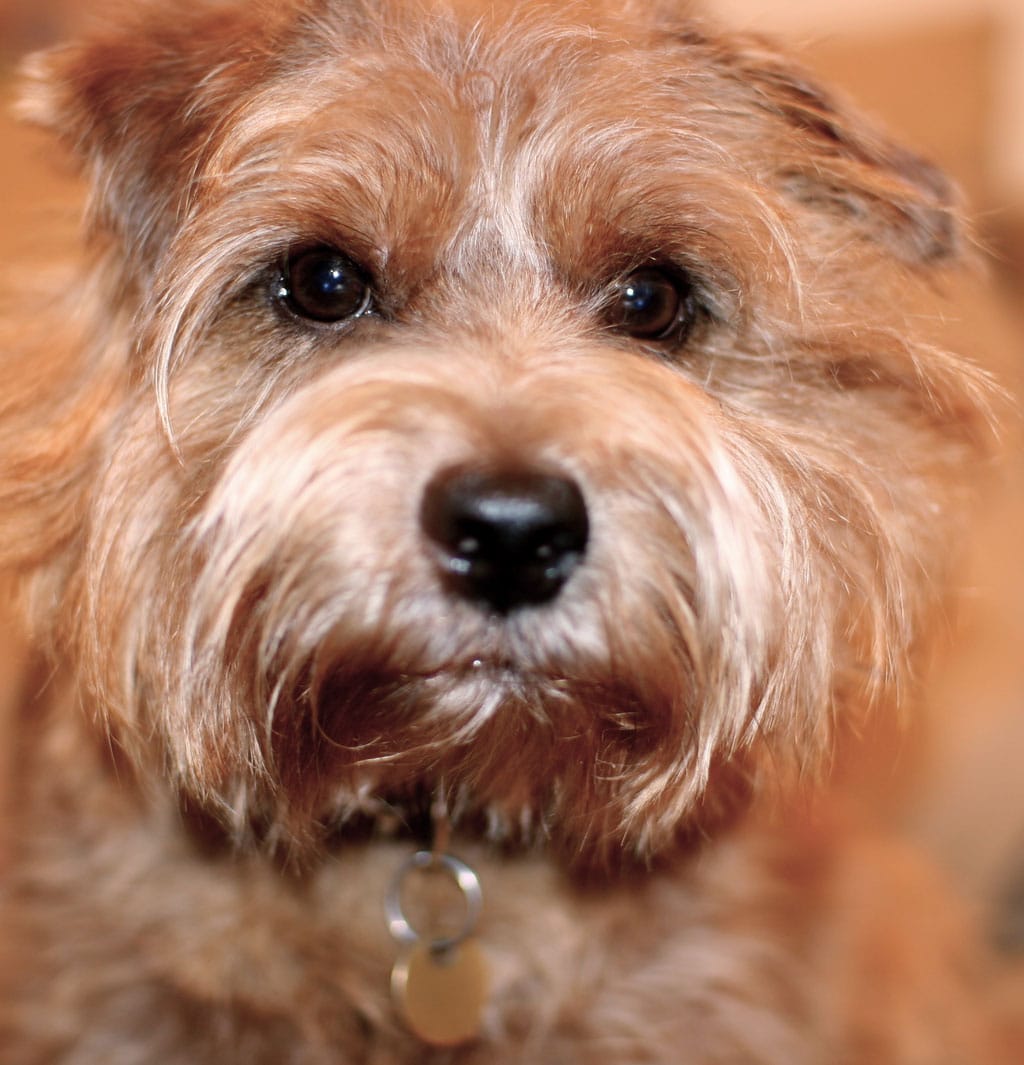
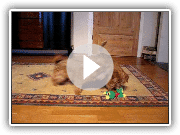
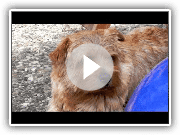
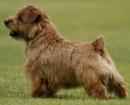
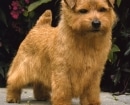
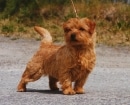
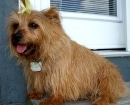
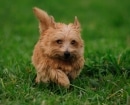
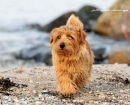
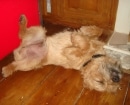
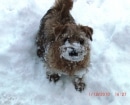
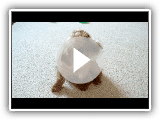 Cute Norfolk Terrier Puppy
Cute Norfolk Terrier Puppy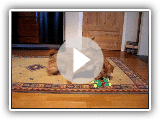 Two norfolk terriers playing
Two norfolk terriers playing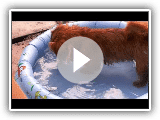 Norfolk Terrier Plumperplanschi
Norfolk Terrier Plumperplanschi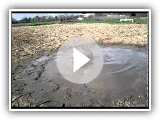 Norfolk Terrier Obe in a mud hole
Norfolk Terrier Obe in a mud hole